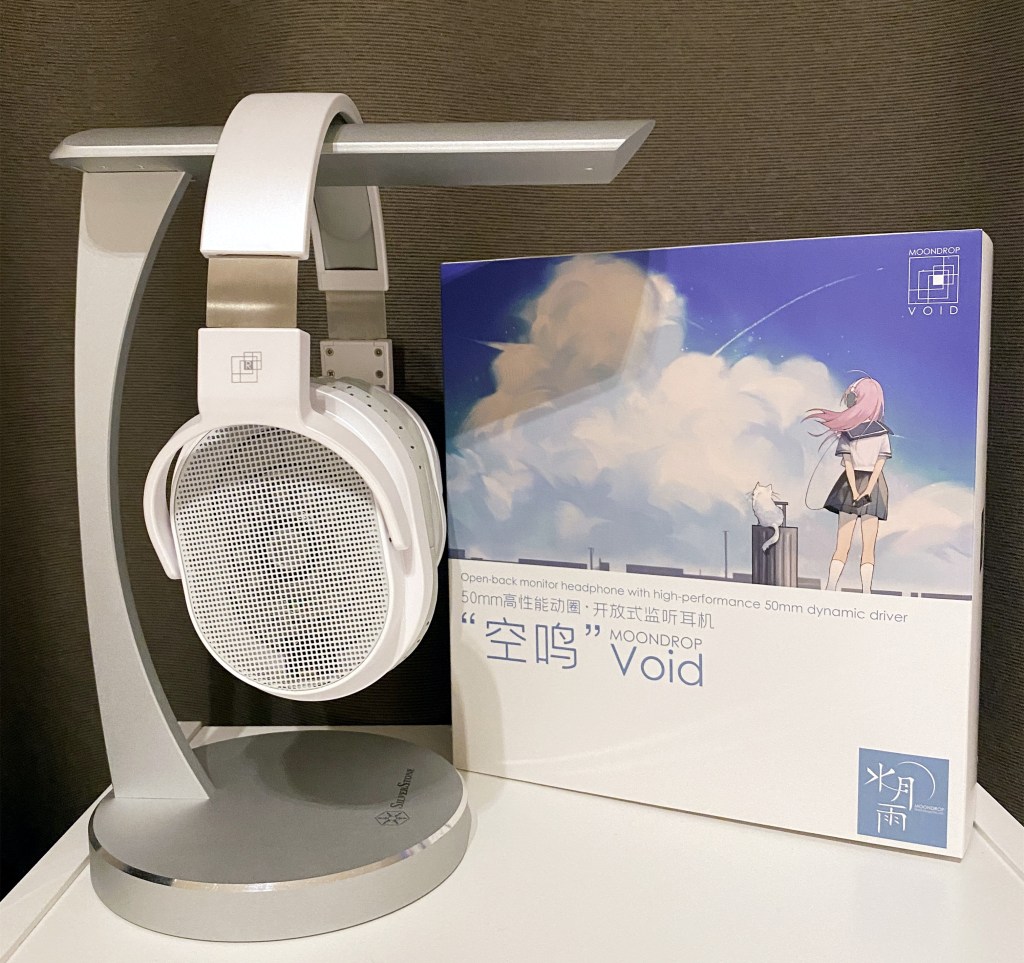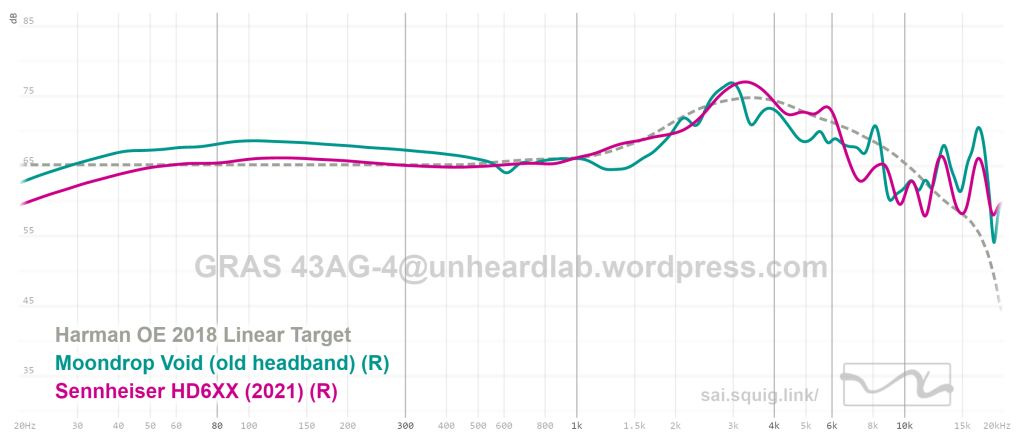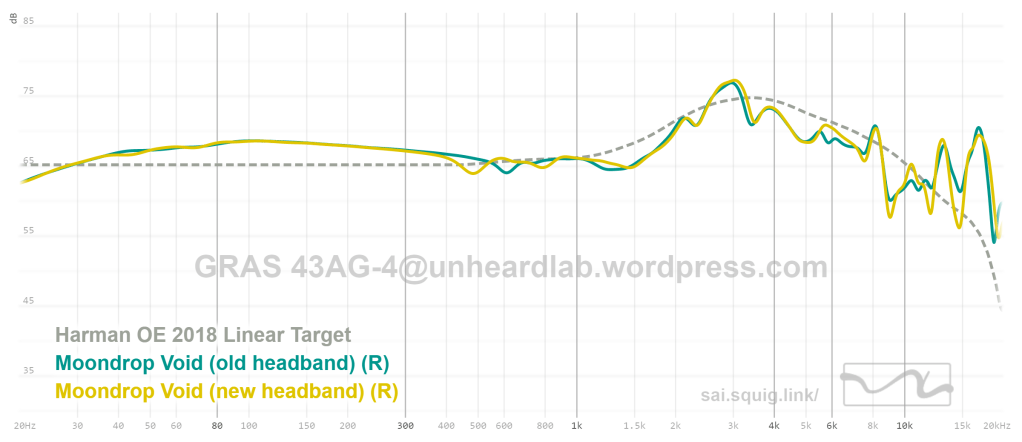
NOTE: Do not buy the Void now. Moondrop is working on improvements over the existing headband design for comfort/coupling, which will most likely result in changes to sound. This review is based on the initial version.
Update with the new headband: they are ok in terms of comfort, so I’ve crossed out the earlier comment.
Intro
Moondrop is one of the big names in the IEM market nowadays. Founded in 2015 it is a relatively young company, but it has built its reputation on highly sophisticated, measurement-oriented R&D. Almost all of its IEM product offerings are designed with the famous Harman Target in mind. Now, readers of this site may know I am no expert in IEMs, so I won’t go into more details about the company, which has thusfar being only making IEMs. Two months ago Moondrop announced three over-ear products in one stroke, each employing a distinct driver technology (watch this if you’re interested in more details).
Today, we have for you the Void (US$ 199), the first and the cheapest model in their OE line. So, is the Void up to snuff like Moondrop’s IEM products?

The usual Moondrop tuning at play? Well maybe not so much. Almost all of Moondrop’s IEMs conform to the Harman 2018 IEM target, while you can clearly see deviations from the Harman 2018 OE target in the case of the Void. Most of the deviations are in the midbass region and the upper mids to lower treble area. Let’s see how these deviations come across.
But before that… there’s something we gotta talk about, comfort. The Moondrop Void is hell of a clamping device. People say you often don’t succed the first time you try something, and in the case of the Void, it’s the ergonomics they completly fxxked up. The headband is so stiff and unflexible plus the ear pads are so shallow that my ears touch the drivers from time to time. This is clearly unacceptable. Moondrop has already responded to this problem and announced a redesign though. So don’t buy the Void till that happens. The below review is the product of me torturing myself for hours with the existing design 🙂
Overall Impression:
Mildly U-shaped sound leaning towards the warmer side of neutral but without being veiled/muffled. Some colourations here and there but mainly in a subtle way. Instruments sound lively and realistic. Vocals have a decent body to them while remaining articulate. Excellent bass impact. Slightly forward presentation. Easy going sound profile pairs well with most genres.
Tonality:
For those who have been looking for the ‘HD6XX with more bass’, this is prolly it. There are, although, certain concessions.
Bass quantity and quality are both excellent. With open-back dynamic drivers the Void naturally rolls off in the subbass just like the 6XX does, but there’s much more bass quantity. Low end heft, slam and impact are clearly a step above. Larger drivers are always preferrable in this regard (50mm vs. 40mm on the 6XX).
Excessive energy between 200-400hz or ‘midbass bleed’ can result in muddiness of the midrange, but somehow surprisingly this does not really come across in actual listening – at least not as much as the FR shows. Bass on the Void is boaderline warm, slightly fuzzy but never muffled. Nylon guitar sweeps have great body to them without sounding thick or muddy, which I tend to find to be the case with the Harmonicdyne Zeus (do note however this could be caused by less than ideal coupling on the human head than on the measurement rig).
Midrange is mostly realistic, again slightly warm with the midbass bump. Decent linearity between 500-2khz renders great clarity to the mids. The Void trade blows with the 6XX having more energy between 2-3khz but less in 1-2k and 3-6k. Vocals in general is less ‘in your face’ than the 6XX but still forward in their own right especially comparing to cans like the HD800 or HE6SE. Texture and ‘grain’ is a bit less pronounced, or you could say that the Void sounds more ’rounded’. It also depends on what kind of vocal though. Female vocals tend to sound more articulate on the Void due to more linear mid-treble transition. More on this below.
Treble may be a matter of debate. To me one of the weak points of the 6XX is a relative lack of ‘sparkle’ or ‘zing’ with cymbles or higher frequency instruments like the violin or the piccolo. The great thing about that is the 6XX never sounds sibilant or fatiguing, while the Void would token the sharpness or sibilance in the tracks if they were mixed so. But at least in terms of ‘neutrality’ or authenticity to the recording therefore the Void would be preferrable. This is because the proportion of harmonics is more realistic with the Void. There’s also quite a bit more ‘air’ than the 6XX, which may contribute to a better sense of transparency and naturalness of soundstage.
Technicality:
We would like to first clear our position on ‘technicality’, a term that often cause heated debates. Here it is taken as qualities that may not be directly reflected in FR, though may be caused by FR. In this sense, ‘detail’ or ‘resolution’ as we know it may not actually exist, but they offer terminologies with which we can meaningful discuss aspects of the sound.
The best part here is arguably the sense of dynamics and impact. While this certainly has to do with bass level, I am somehow led to believe that the driver is also more capable in this regard: it is super punchy with excellent contrast between strong and weak notes. Moondrop’s proprietary driver with its large surround and metal coated dome seems quite capable.
The Void is not outstanding in spatial performance, which is somewhat expected given the rather simplistic design, ie. there is no driver angle or super larger driver/chamber design etc. I can understand this choice: it’s not that Moondrop didn’t want to do it, but because the pursuit of these ‘technical qualities’ often result in trade-off with a linear frequency response. The case in point here is the Sennheiser HD6X0 and HD800 series.
Soundstage of the Void is about on par with the 6XX: it wins stage width but loses on the projection of depth. This may be caused by the relative lack of 4-6khz comparing to the 6XX, an frequency band that some believe to impact the sense of distance (REW names it ‘presence’). Overall transparency and naturalness is where the Void clearly trumps the 6XX, and this is most likely caused by a more adequate level of upper treble energy.
Separation and layering, or what some may call ‘resolution’ or ‘detail’, is also not particularly wonderful with the Void. Don’t get me wrong – the Void has fair separation ability, just not as impressive as some mid-fi planars like the Sundara 2020. It sits on about the same level as the 6XX, while each have its own strengths: the 6XX with vocals and the Void with instruments. Control over busy passages seem to favour the Void though. I threw some heavy metal tracks on the Void and electric guitar distortion seems to always remain smooth yet distinct. Instruments on orchestral pieces also sound more well separated than the 6XX. For those looking the 6XX with slightly ‘clearer’ or ‘sharper’ presentation, this is about it.
Verdict:
Let’s put it like this: the Moondrop Void is pretty much a ‘modernised’ HD6XX with more extension on both ends, while the rest of the frequency spectrum is about as realistic sounding. Some may prefer less midbass presence but others may welcome the added warmth. Treble and air with the Void is on a more adequate level than the 6XX which tends to midly smooth out some of the edges in the music, so it ultimately boils down to your own preference. At US$199 the Moondrop Void is a competent offering of a neutral alternative but that’s if the ergonomic issues were resolved.
Pros: excellent tone: powerful bass slam and impact, neutral mids, crisp treble; detachable cable with 3.5mm plugs
Cons: limited stage presenation; passable technical performance; some may prefer less midbass; ergonomics, ergonomics, ergonomics!!!
Do you have a specific song/track in mind that you want my impression on with this headphone? Let me know in the comments or PM me directly.
PS. You’re welcomed to share my post anywhere, so long as you provide a link to my original post.
UPDATE 17th Apr 2023:
Received the new headband. Soundwise they don’t do much difference but significantly better for comfort. Now I can actually wear these headphones… still not super comfy but at least they’re not killing me.
Measurement for the new headband:

